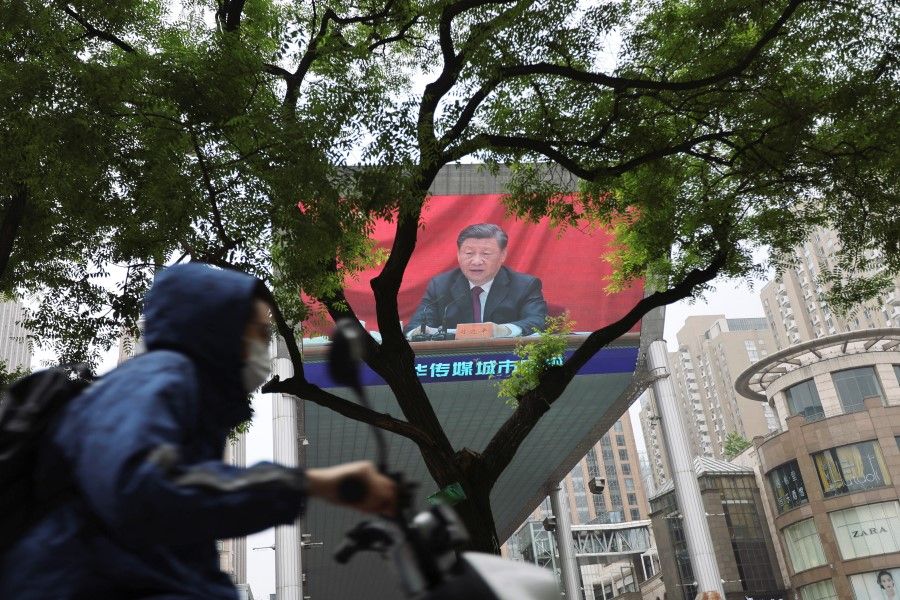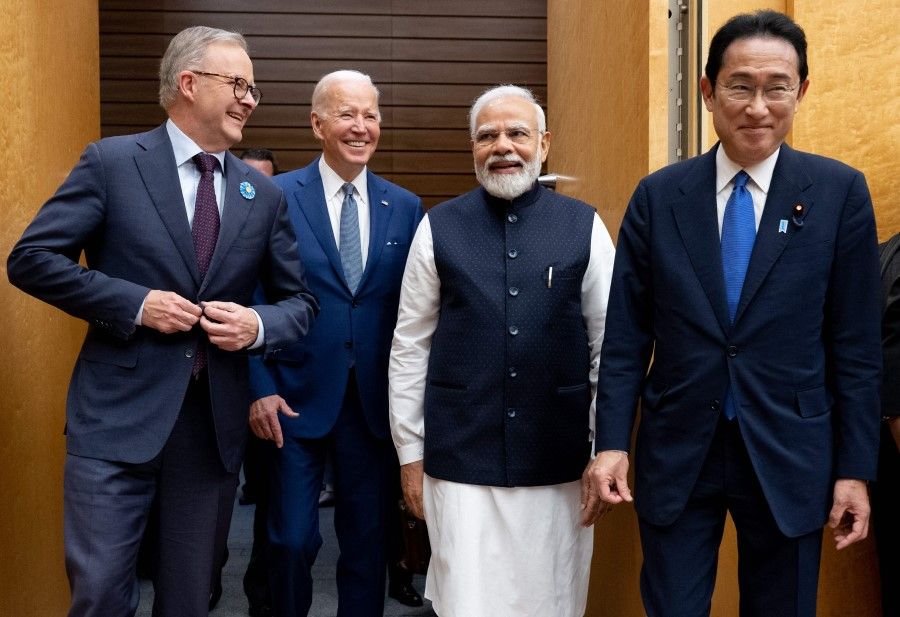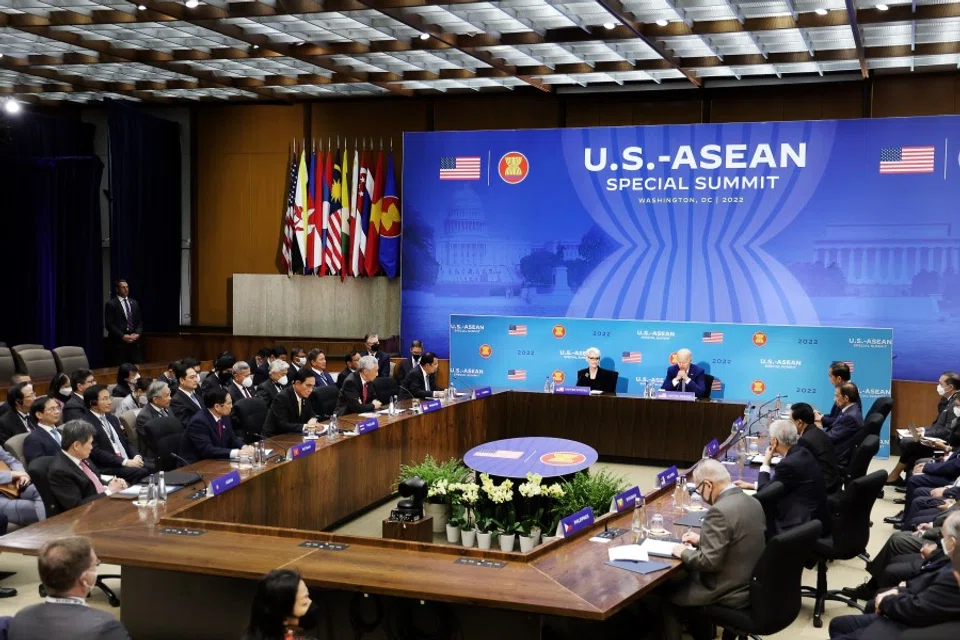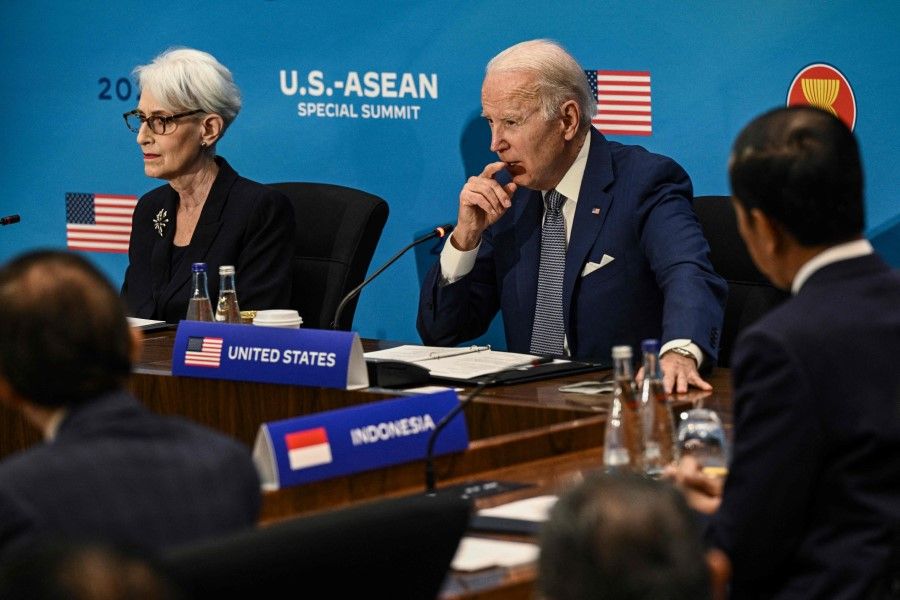Australia's turn towards the US: ASEAN centrality at risk

In the decades following the end of the Cold War, Asia's security environment was notable for the emergence of a distinctive security architecture. Comprising both the extensive bilateral security alliances forged by the US to manage its containment policy in the Cold War, as well as a set of new multilateral mechanisms and institutions, these arrangements provided a mix of liberal and realist ways of managing the region's changing environment.
The desire of most states was to retain a stable strategic balance, organised around the preponderance of US military power, in the face of a rising China, while also creating mechanisms to tackle the emerging non-traditional security challenges that globalisation had brought to the fore.
ASEAN sought to position itself at the centre of these new mechanisms. With India, the US and Russia all joining the most expansive of these, the East Asia Summit (EAS), in the early 2010s the architecture looked well placed to keep the region peaceful and prosperous in spite of the many threats that loomed over the horizon.
Emergence of 'minilateral' groupings
More than ten years on from the EAS expansion in 2011, the regional security architecture looks decidedly shaky, given that its ability to prevent or contain US-China rivalry has proven illusory. Equally, the ASEAN-centred mechanisms look leaden-footed and poorly placed to respond with the necessary speed and agility to a rapidly deteriorating regional and global security environment.
While ASEAN-led groupings struggle, states seeking to advance their security interests are taking things into their own hands, and "minilateral" groupings, hitherto at the margins of the broader architecture, have come to the fore. The rapid reinvigoration of the Quadrilateral Security Dialogue (Quad), as well as the creation of the Australia, UK and US trilateral security partnership (AUKUS), are illustrative of these new dynamics.

It was an enthusiastic participant in the proliferation of new multilateral mechanisms in the 1990s and 2000s but has clearly changed its priorities, reflecting a turn from a more optimistic sense of the region to a gloomier outlook about both the region and the mechanisms needed to advance the country's interests. Australia, always an enthusiastic multilateralist, has been an especially active player in this period. It has been instrumental in these new developments and the country has even become something of a bellwether. Its circumstances as a security ally of the US with important economic ties to China reflect the situation of many middle-ranking powers in the region.
Australia's pessimistic turn
Until the early 2010s, particularly before the ascension to power by China's President Xi Jinping in 2012, the regional architecture appeared to be a good means, if not an optimally designed one, to secure the world's most important region. Australia had been an enthusiastic participant in the development of these new mechanisms as well as being keen to reshape its alliance with the US to reflect the changing circumstances.
During this period, Canberra evinced an optimistic sense about the region and its prospects. While Sino-American rivalry was evident, it appeared to be able to be kept within the guardrails established by the security architecture and the economic interests that were shared across the region. Australia's Foreign Policy White Paper of 2017 was imbued with this outlook.

Shortly after the paper's publication, Australia began to take a more pessimistic view of the region, prompted in the main by a significant recasting of its relationship with China.
Australian policy elites were unsettled by the more assertive turn in Xi's foreign policy in the region, the heavy-handed approach to Hong Kong, as well as by the significant modernisation and expansion of its military capabilities. Canberra also perceived that China was seeking to challenge Australia at home through political interference and espionage activities. The government blocked Chinese companies Huawei and ZTE from participating in Australia's 5G network rollout, and introduced legislation intended to curtail foreign interference in key institutions such as universities and corporations more broadly.
In addition, Washington has adopted a much harder line towards Beijing, putting great power contestation with China as the centrepiece of its global strategy, which confirmed to elites in Canberra the need to put aside the optimistic sense that major power conflict was a generation away. In its 2020 Defence Strategic Update, Australia adopted a much bleaker outlook towards the region.
The two most visible forms of this shift are the reinvigoration of the Quad and the AUKUS partnership.
New forms of security cooperation
The Quad
As a result, Australia has recalibrated its approach to its security and strategic policy. Most obviously, this has entailed a commitment to the biggest expansion of Australia's armed forces outside of war time. However, as a middle-ranking power with extensive international vulnerabilities, security cooperation has long been a central component of its defence policy. Unsurprisingly, this shift in approach has generated some of the most dynamic new initiatives in Australian policy. The two most visible forms of this shift are the reinvigoration of the Quad and the AUKUS partnership.
The Quad was first established in 2007, and then Japanese Prime Minister Shinzo Abe was its most voluble advocate. Lasting barely 12 months before being mothballed, the gathering of Australia, India, Japan and the US to discuss shared security matters seemed not well suited to the needs of the four nor to the security environment at the time. Ten years later, it reconvened with a meeting at the sidelines of the 2017 EAS. It then held a series of senior officials' meetings in 2018 and at the foreign minister-level in 2019 on the sidelines of the UN General Assembly, with subsequent ministerial meetings in 2020 in Tokyo and virtually at the start of 2021.
The first leaders' level meeting was hosted by President Joe Biden in 2021 and will be an annual event to ensure sustained political momentum for a grouping that the four now see as a crucial new component of what they describe as the Indo-Pacific's security setting. As they explained in the rather lengthy first leaders' communique, the Quad exists to promote "the free, open, rules-based order, rooted in international law and undaunted by coercion, to bolster security and prosperity in the Indo-Pacific and beyond".
Yet it is important to note that while it has swiftly gathered political momentum and a shared sense of purpose, as yet it has not taken any major steps to turn its words into action...

The Quad is avowedly focused on security cooperation with a particular emphasis on coordinating military operations and strategic policy more broadly. But it has, in fairly swift order, expanded its remit to include proposed work programmes on the environment, public health and high technology. Economic matters are not part of the equation at present, a notable shortcoming given the ways in which China uses geo-economics to advance its interests.
That said, it has developed rapidly and is the most dynamic of the region's many security groupings. This is aided by its small size, narrow focus and pragmatic approach. Yet it is important to note that while it has swiftly gathered political momentum and a shared sense of purpose, as yet it has not taken any major steps to turn its words into action, and the decidedly not-unified views of the four to Russia's invasion of Ukraine show the ongoing challenge of aligning the interests of these major maritime powers.
For Australia, the Quad is a priority in terms of political emphasis and bureaucratic resourcing, with a Quad branch recently established by the Department of Foreign Affairs and Trade, and a deputy secretary responsible for the Quad, AUKUS and naval shipbuilding in the Department of Prime Minister and Cabinet.
This priority comes because of Canberra's perception that the regional consequences of China's rise require developing and managing balancing coalitions to contain the expansion of Chinese influence and power, especially in the maritime domain. It is also underpinned by the consensus across the four countries about how to respond to China.
The emergence and dynamism of the Quad is an unmistakable vote of no-confidence by Canberra in both the form and function of Asia's existing multilateral security initiatives.
Australian policymakers have long found the process-oriented approach and consensus building at the heart of ASEAN and its offshoots frustrating - the view in Canberra has long been more focused on results - and the sense of geopolitical pessimism has driven this to the fore.
The sentiment, entirely unspoken of course, is that the existing regional security architecture is unable to provide the kind of collaborative action that Australia, the US and Japan think is needed and they will take the necessary steps to achieve those goals even if it means creating new mechanisms. The emergence and dynamism of the Quad is an unmistakable vote of no-confidence by Canberra in both the form and function of Asia's existing multilateral security initiatives.

Interestingly, Australia and the other members have been at great pains to try to avoid this perception, emphasising repeatedly that they are committed to ASEAN centrality and the importance of the Southeast Asian grouping to the region.
The Quad leaders' joint statement of March 2021 "reaffirm[s] our strong support for ASEAN's unity and centrality as well as the ASEAN Outlook on the Indo-Pacific". In the September communique, the four "reaffirm our strong support for ASEAN's unity and centrality and for ASEAN Outlook on the Indo-Pacific, and we underscore our dedication towards working with ASEAN and its member states - the heart of the Indo-Pacific region - in practical and inclusive ways".
The most full-throated declaration of ASEAN-fealty to date came from a meeting of the Quad foreign ministers in February 2022: "As unwavering supporters of ASEAN unity and centrality, and the ASEAN-led architecture, we continue to support ASEAN partners to advance the practical implementation of ASEAN Outlook on the Indo-Pacific. The Outlook's principles are fundamental to regional stability and prosperity and will be key to guiding the region's economic and political future." Australia and its Quad partners talk a good ASEAN game, but their deeds do not match their words.
AUKUS
The sudden announcement of the AUKUS partnership on 15 September 2021 took the world by surprise. With no warning to friends and allies, indeed with few even in the Australian government being aware, Australia announced that it was walking away from its contractual agreement with the French Naval Group to provide its next-generation submarine fleet.
...a middle-ranking power seeks to collaborate with others to advance its security interests in a much more contested Asian region in a more risk-taking and outcome-driven manner.
Instead, Australia entered into an ambitious technology sharing arrangement with the US and the UK to acquire nuclear-powered submarines, and committed to a wide range of technology sharing and capability enhancing cooperative endeavours. The intent of the partnership is to "help sustain peace and stability in the Indo-Pacific region" and presumably over time will move beyond matters of technology cooperation and into strategic policy collaboration.
AUKUS represents a striking development in Australia's approach to security cooperation in Asia, and not only because of the nuclear dimension. It embodies, more than any other policy decision Canberra has taken, its priority on outcomes, its surprising disregard for partners and the benefits of multilateral processes, as well as an appetite for risk that had hitherto not been the norm.
It is important to note that AUKUS is in its infancy. It remains a statement of intent - notably, no further formal documentation has been agreed to beyond the press release of September 2021; and what it will eventually deliver both in terms of specific capability enhancements and cooperative activity is difficult to discern with any clarity.
Nonetheless, it illustrates a significant shift in Canberra's approach to a range of military matters - nuclear-powered submarines had previously been ruled out for both technical and political reasons. It clearly indicates that a middle-ranking power seeks to collaborate with others to advance its security interests in a much more contested Asian region in a more risk-taking and outcome-driven manner.

AUKUS is also notable for the rather lesser concern its members show for ASEAN. Where the Quad has volubly declared its rhetorical commitment to ASEAN centrality - perhaps protesting a bit too much - the AUKUS arrangements show much less concern with the Southeast Asian institution or its members.
Indeed, the lack of any substantial prior warning to the group or key partners, along with the rudeness shown to France, produced diplomatic blowback. ASEAN is mentioned once somewhat perfunctorily in Australian Prime Minister Scott Morrison's AUKUS press release that the trilateral agreement "will complement Australia's network of strategic partnerships, including with our ASEAN friends".
The more broad-based and inclusive visions of the security architecture of the past are not seen as particularly useful in the current climate.
Among like-minded countries
These new security initiatives in which Australia is closely involved share a number of distinctive attributes. Most obviously they are narrowly focused on matters of military and defence. Whereas in the past, security cooperation in Asia often centred on non-traditional concerns, humanitarian assistance and disaster relief and other areas of low political contention, now, reflecting Australia's heightened focus on more old-fashioned security threats, controversial military matters are at the centre of activity.
Second, they are collaborations between a small number of countries. The more broad-based and inclusive visions of the security architecture of the past are not seen as particularly useful in the current climate. Instead, Australia is attracted to more circumscribed groups where it is easier to generate consensus and rally common actions based on shared interests and where the group is not hide-bound by rules and norms that might get in the way of concrete action. While Canberra retains a strong rhetorical commitment to ASEAN and to its norms and centrality, pragmatic outcome-oriented groups are the order of the day.
Third, security cooperation has, in the past, been driven by a liberally inspired outlook whereby economic cooperation and technical collaboration in functional spheres can build trust among elites, drive cooperation in other more sensitive domains, and in turn reduce security risks over the longer term. This outlook is plainly not part of these moves, and indeed the emergence of the Quad and AUKUS should be interpreted as a repudiation of that approach to security cooperation.
This also reflects the broader reality that while Australia has focused on ASEAN for some time, most notably hosting a special summit in 2018 and appointing a resident ambassador to ASEAN in Jakarta, and even established a "comprehensive strategic partnership" with the grouping in 2021, it has struggled in getting that engagement with the institution to generate preferred policy outcomes.
Southeast Asia will remain important for Canberra, but the focus on the region will be less through the lens of ASEAN and multilateralism and instead be concerned with specific issues and bilateral ties. Overlaying that will be the overriding concern of security risks and great power competition.
...with the US favouring these minilateral groupings and showing little confidence in "inclusive" approaches to cooperation, ASEAN's appeal to members and non-members alike is likely to be diminished.
Consequences for ASEAN and the region
Although the evolution and expansion of the region's security architecture was very much an ASEAN-centred development, the dynamism and significance of the non-ASEAN bodies with which Australia has invested so much time and political capital should be a cause of some concern within the grouping. Put simply, ASEAN's goal of remaining at the centre of regionalism in Asia is at risk.
The Quad and AUKUS are centred around the US due to its paramount military power. Washington also shares Australia's interest in result-oriented security mechanisms, and has found it difficult to sustain long-term engagement with ASEAN.
The Southeast Asian grouping was able to command the stage precisely because none of the region's great powers was interested in leading security cooperation; with the US favouring these minilateral groupings and showing little confidence in "inclusive" approaches to cooperation, ASEAN's appeal to members and non-members alike is likely to be diminished.

The erosion of ASEAN centrality is also likely to reduce the institution's broader regional influence. This in turn risks exacerbating the already extant cleavages within the grouping. An often-forgotten aspect of ASEAN centrality is the locus of the organisation in the foreign policy of its members. Its importance to the region is a function of its importance to its members and vice versa. A decline in ASEAN centrality in the regional security architecture will likely lead to a decline in ASEAN's importance to its members, thus driving the already existing divisions within the group to the surface.
...the grim reality of a region in which war is once again in the realm of the thinkable.
This speaks to the final more worrying implication of initiatives such as AUKUS and the Quad. When Asian security multilateralism emerged, it was driven by a number of motives, key among which was the desire to manage great power relations and prevent the return of great power rivalry following the violent experiences of Asia during the Cold War. The extraordinary destruction and millions of deaths in the wars on the Korean peninsula and Indochina remain in living memory; Asia knows the cost of uncontrolled great power competition.
There is a good chance that the moves in the region that Australia has been at the heart of will mark the end of post-Cold War security multilateralism in Asia. The casting aside of the more inclusive forms of security cooperation, and the focus on exclusive mechanisms which are intended to shape great power competition and not to prevent it, reflect the grim reality of a region in which war is once again in the realm of the thinkable.
This article was first published by ISEAS - Yusof Ishak Institute as a Fulcrum commentary.
Related: Australia boosting security relations with Southeast Asia and the US in the face of heightened threats | Tacking towards Australia: Japan's move to diversify its security and defence cooperation in the Indo-Pacific | With AUKUS in place, now what for key players in the Indo-Pacific? | AUKUS: A reflection of ASEAN's inability to cope with China's rising assertiveness? | Containing China: Will the Quad become an Asian mini-NATO?
